Hot sugared doughnuts at the seaside, cookie topped ones from a local bakery, or jam-filled creations from a supermarket – doughnuts have captured the hearts of the nation.
So much so that there is an annual week-long celebration in their honour. National Doughnut Week, which takes place from 18 to 26 May 2024, sees bakeries, cafes, and other businesses raise money for charity The Children’s Trust through the sale of the sweet treats.
Ahead of this year’s celebration, which there is stil time to sign up for, British Baker caught up with sponsor CSM Ingredients to find out what bakers need to do to create the perfect doughnut.
It’s worth noting that there are different types of doughnuts: yeasted and cake. The former is the most popular and are widely available across the UK. The latter, notes Jack Kelly, technical account manager – modern trade & field trade UK for CSM Ingredients, are made from cake batter with no proofing required. They’re often found in single purchase outlets where they are made fresh.
“Because of the nature of the ingredients and the product they absorb more fat and do not stand the test of time if kept on display in a bakery throughout the course of the day,” Kelly explains.

What makes the perfect doughnut?
There are several factors to consider when making the perfect yeasted doughnut, observes Kelly. This includes:
- The mix used to make the doughnut
- The flour used
- The temperature of the actual dough and the handling of it
- The type of oil its fried in
- The temperature of the oil
- Using oil with a high smoke point
- The frying time, which is dictated by the weight
“It’s not a one size fits all and bakers can spend years creating the perfect doughnut from their specific bakery,” he notes. “Toppings, fillings, and flavours have an obvious impact alongside the mix used which must suit the type of doughnut being produced, the retail price point, and the skill set of the team making the product.”
The oil must be clean, free of debris, and specific to frying doughnuts, he adds, noting that it is important to use oil that has a neutral flavour and fry at 185°C.
“It’s a fine art and hugely important to get this right. Frying at too low a temperature means the doughnut doesn’t set and can lead to high fat absorption. Frying too high means the doughnut is coloured too soon before the centre is set,” Kelly explains.
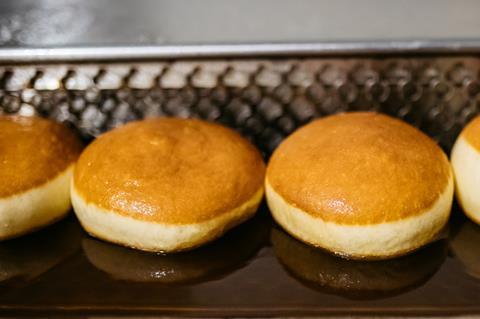
Quick tips
To help ensure bakers get crowd pleasing doughnuts every time, CSM Ingredients advises the following:
- Get the frying temperature correct – use a thermometer as well as the frying temperature gauge to ensure the correct frying temperature is achieved
- To enhance the texture, place the rack of doughnuts in a chiller overnight and use a rack cover. In the morning, remove the rack cover then place doughnuts in the prover until they are the desired size. This creates a ‘skin’ on the outside which protects from fat absorption
- Add liquid egg to the doughnut mix to give a more structure and flavour and luxurious end product. This is great for dessert doughnuts that are bought individually
- Doughnuts should always be sugared when they are hot
- Ball and ring doughnuts can be made using the same mix but require a different process. Ring doughnuts are commonly made by using the sheet and cut method, depending which bakery equipment is used for sheeting out the dough the water level might need decreasing slightly as the dough is easier to process if slightly firm. Another method for a ring doughnut is extruding and this requires a slack dough to simply help the extruding/depositing process
Inspiration
When looking for ideas, Kelly encourages bakers to look beyond the UK and draw inspiration from around the world.
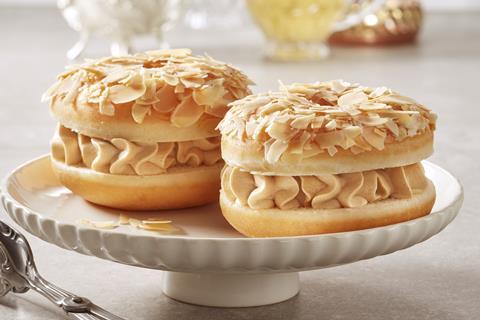
For example, put a new spin on the iconic Paris-Brest by combining it with a doughnut. CSM suggests covering the top of the doughnut in almonds, cutting it in two and filling with a custard, praline, and Bavarian mousse powder mix. New flavours can also be integrated such as strawberry and white chocolate, topped with mille-feuille with a hazelnut pastry cream.
Embracing Asian flavours such as matcha and cherry blossom could also pique the interest of adventurous consumers. By adding matcha powder to the doughnut dough, bakers can add a green hue. Top with matcha meringue and freeze-dried raspberries for an Instagram-worthy treat.
Paczki – doughnuts hailing from Poland – could also find favour, according to CSM. The most popular variation is a chocolate covered doughnut or alternatively powdered sugar, icing or glaze. They are made from a rich dough, which includes egg and additional fruit and creme fillings.




















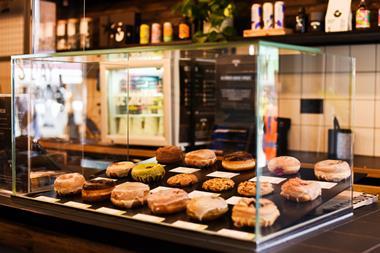


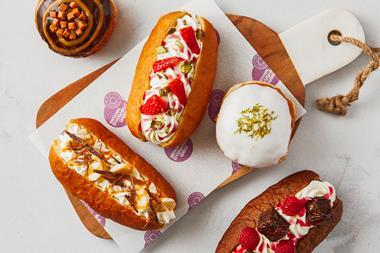




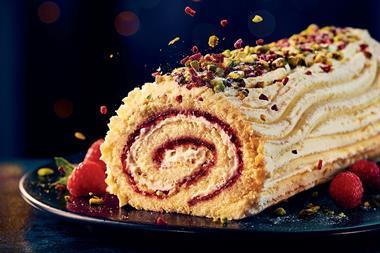

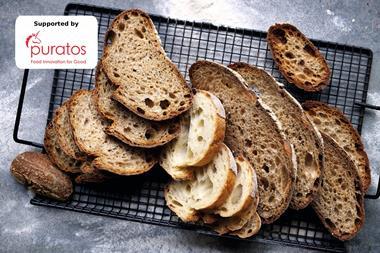


No comments yet